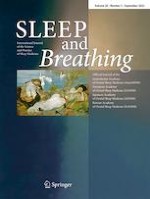Erschienen in:

26.09.2021 | Epidemiology • Original Article
Insomnia symptoms are associated with an increased risk of type 2 diabetes mellitus among adults aged 50 and older
verfasst von:
Wenqin Yao, Jia Luo, Xiaohui Yu, Wenjie Jiang, Dongfeng Zhang
Erschienen in:
Sleep and Breathing
|
Ausgabe 3/2022
Einloggen, um Zugang zu erhalten
Abstract
Purpose
To evaluate the association of the different degrees of insomnia symptoms with subsequent incidence of type 2 diabetes mellitus (T2DM).
Methods
The data were extracted from Health and Retirement Study 2006–2014 waves. The association of insomnia symptoms with T2DM incidence was evaluated by the competing risk model with cumulative incidence function (death was considered a competing event) and Cox proportional hazard model with the Kaplan–Meier method. Population attributable fraction (PAF) was calculated. All analyses related to our study were conducted between November 2020 and January 2021.
Results
A total of 14,112 patients were included in this study, with an average follow-up of 6.4 years, and the incidence density was 17.9 per 1000 person-years. Insomnia symptoms were positively associated with T2DM incidence compared with those with no insomnia symptoms, regardless of competing risk model (≥ 1 symptoms: sub-distribution hazard ratio (SHR) 1.13; 95% confidence interval (CI) 1.02–1.26; P-trend = 0.012) and Cox proportional hazard model (≥ 1 symptoms: hazard ratio (HR) 1.13; 95% CI 1.02–1.26; P-trend = 0.013). The cumulative incidence function (Gray’s test, p < 0.001) and Kaplan–Meier estimate (log-rank test, p < 0.001) also presented this positive relationship. This positive association was more apparent in women and participants with ages from 50 to 65 years. The PAF was 4.1% with 95% CI (0.7–7.9%).
Conclusions
Insomnia symptoms may be an important risk factor for the development of T2DM, which is unbiased by the death competing risk. These findings suggest that management of sleep problems may be an important part of strategies to prevent T2DM.